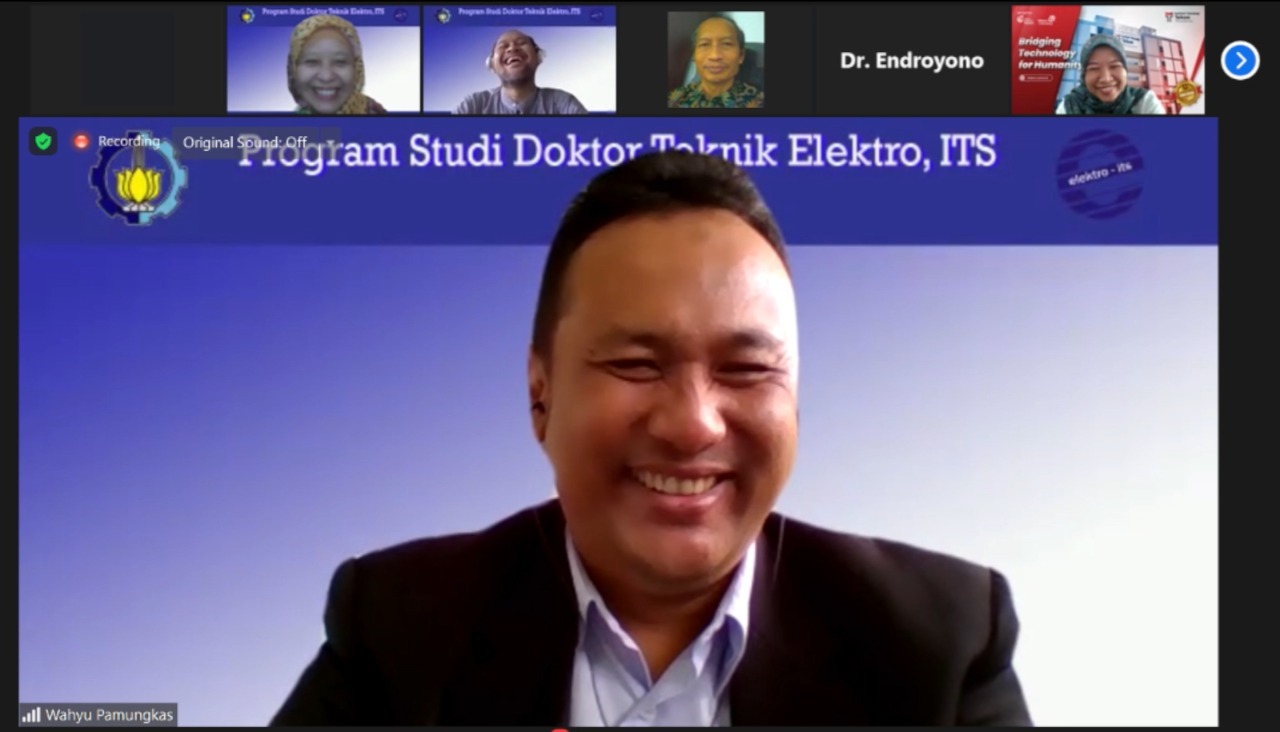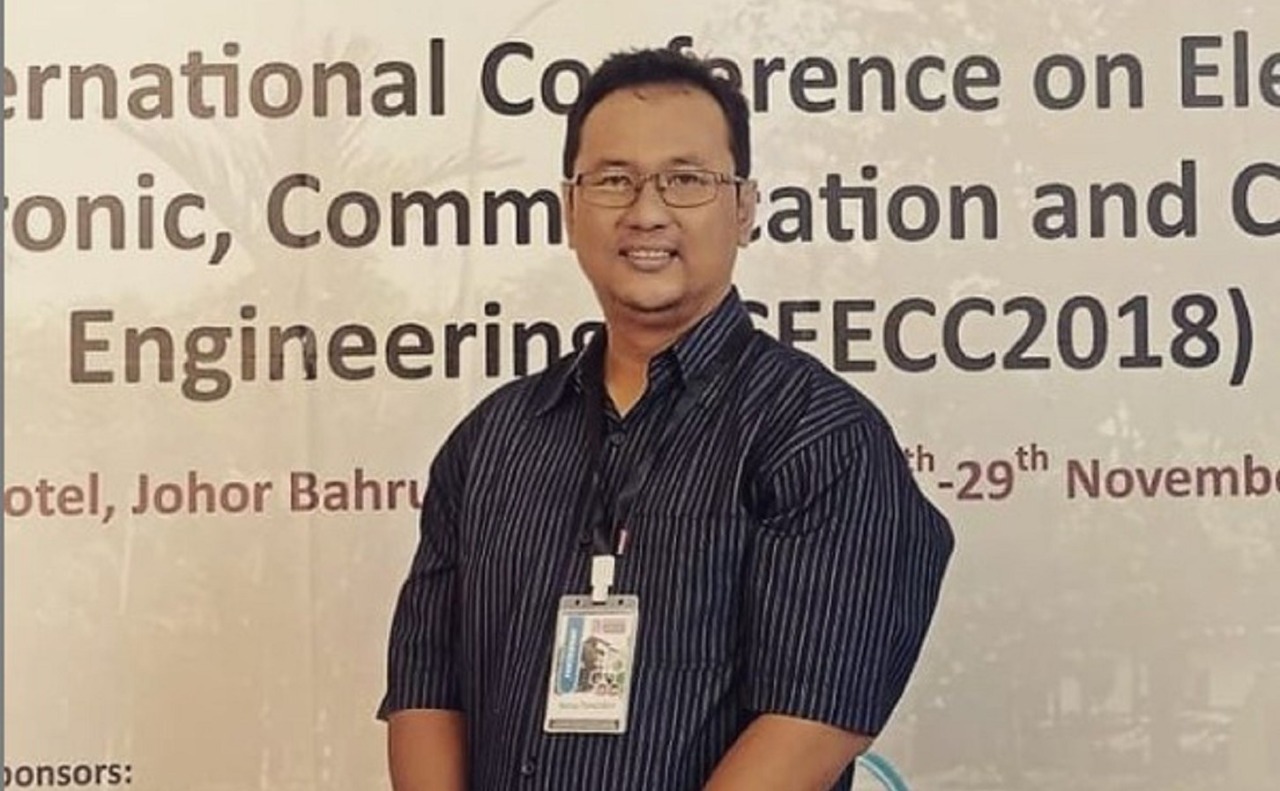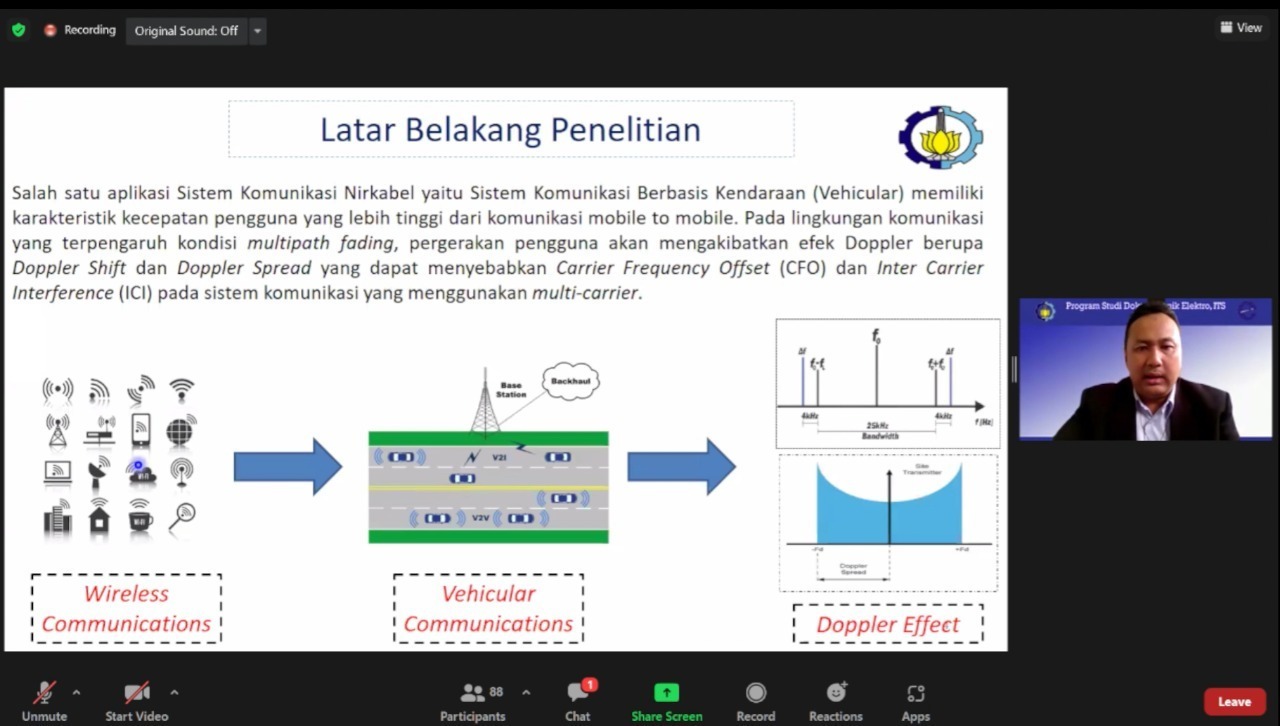ITS Doctor Creates Doppler Effect Mitigation Method on V2V Channel

Wahyu Pamungkas answering the questions from the participants of his doctoral promotion online webinar
ITS Campus, ITS News – The development of Vehicle to Vehicle (V2V) Communication for the coming era still has several problems regarding their communication system. One of which, is the frequency shift received by the receiving vehicle due to the Doppler effect.
To overcome that problem, the doctoral student of Institut Teknologi Sepuluh Nopember researched the detection of coherence time parameters on communication channels. This man named Wahyu Pamungkas has just completed his doctoral education at the ITS Electrical Engineering Doctoral Program.
Through the proposed method in his dissertation titled Mitigation of the Doppler Effect on the V2V Channel with Moving Scatter Using Coherence Time-Based Dynamic Equalization, Wahyu managed to get a better system performance up to 48 percent and 63 percent from the two previous methods.

Wahyu Pamungkas, the new doctor from the Department of Electrical Engineering ITS who created a method of mitigating the Doppler effect on the V2V channel through the detection of coherence time parameters
This good performance is obtained after detecting the coherence time parameter on the wireless communication channel. It does not experience interference due to the Doppler effect and adjusts the arrangement of data frames on the channel. Thus, the data sent is always within that time interval. “The time-lapse when communication becomes easier is what is called coherence time,” Wahyu added.
This doctor who lectures at the Telkom Purwokerto Institute of Technology explained that his research could later be used by the automotive industry and the telecommunications industry at large. Then the design algorithm will be applied to the main V2V communication chip in the C-V2X BTS in 5G technology and autonomous vehicles.

Wahyu Pamungkas explaining his research results in the dissertation webinar to promote the new doctorate of the Department of Electrical Engineering ITS.
However, Wahyu continued, it is still necessary to test the measurement channel in which data is obtained within the Indonesian territory and in collaboration with the related industry. “Perhaps in the next 5-10 years, the results of my research can be implemented by the community,” he said.
This coherence detection concept can also be applied to other mobile communications, such as Low Earth Orbit (LEO) satellites. “Currently, collaboration with Indonesia’s National Institute of Aeronautics and Space (LAPAN) is ongoing to minimize the Doppler effect on their low-orbit satellites,” added the man from Purwokerto.
In the future, Wahyu hopes to collaborate with various parties interested in the concept of mitigating the Doppler effect using dynamic equalization based on coherence time detection. Including the ITS campus, to develop and implement this research. (nadh/ITS Public Relations)
Reporter: Raisa Zahra Fadila
Related News
-
Proudly, ITS Academic Staff Achieves PAPTI Award 2024
ITS Campus, ITS News — Not only lecturers and students but also the academic staff (in Indonesian: Tenaga Kependidikan)
September 13, 2021 21:09 -
Supports Marine Sustainability, Pertamina Goes to Campus Presents at ITS
ITS Campus, ITS News — Institut Teknologi Sepuluh Nopember (ITS) became one of the partners of Pertamina Goes to
September 13, 2021 21:09 -
Anticipating Lost Pet Dogs, ITS Students Invent a Tracking Bag
ITS Campus, ITS News —Losing a pet is a sad thing for its owners. To anticipate this, a team
September 13, 2021 21:09 -
ITS Students Integrate Smart City Service Features Through Visionaries
ITS Campus, ITS News — Institut Teknologi Sepuluh Nopember (ITS) continues to prove itself as a home for talented
September 13, 2021 21:09
